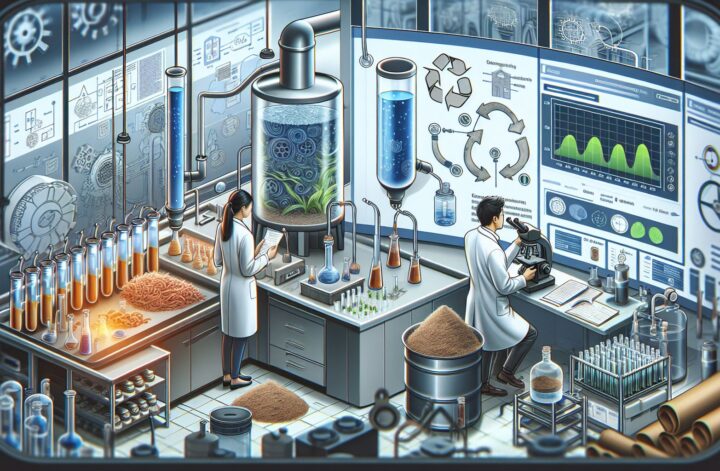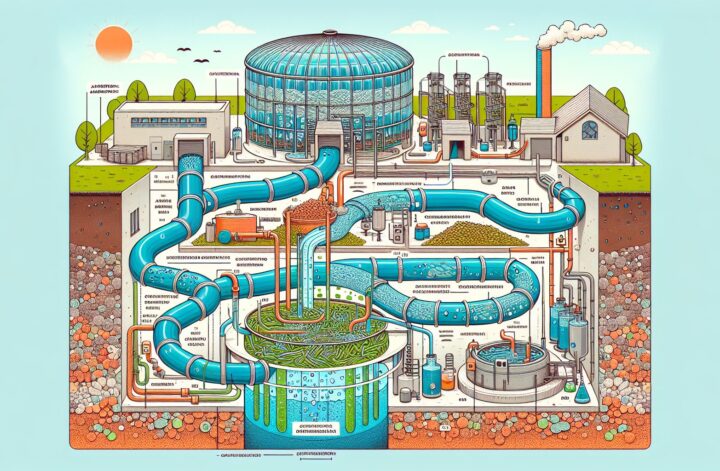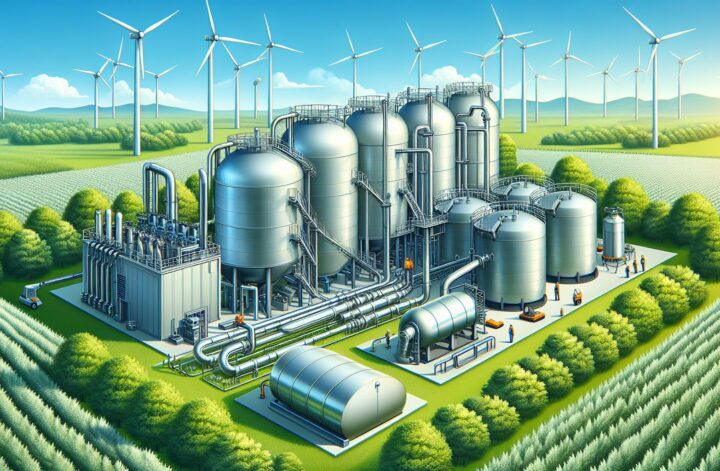In a world grappling with energy crises and environmental degradation, Biogas Production has emerged as a beacon of hope. Derived from biological materials, biogas is a renewable energy source that offers immense potential for reducing greenhouse gas emissions and creating a sustainable future. It also provides an effective solution for managing organic waste. This article delves into the nuances of Biogas Production, shedding light on its operation mechanism, benefits, and the potential for enhancing its efficiency.
Understanding the Mechanism
The production of biogas involves a process known as Anaerobic Digestion (AD). This metabolic process breaks down organic material in the absence of oxygen to produce biogas. The resultant biogas predominantly consists of methane (50-75%), carbon dioxide (25-50%), and traces of other gases [^1^]. The process encompass four stages: hydrolysis, acidogenesis, acetogenesis, and methanogenesis.
Hydrolysis enables the conversion of complex organic materials into simpler soluble forms. Next, during Acidogenesis, the acidogenic bacteria convert these substances into volatile fatty acids and other byproducts. In the Acetogenesis stage, the remaining substances are converted to hydrogen, carbon dioxide, and acetate. Finally, Methanogenesis ensues wherein methanogens convert the interim products into methane, carbon dioxide, and water [^2^].
Unlocking the Benefits
Biogas is increasingly recognized as a promising solution in both energy generation and waste management. It proves useful in Organic Waste Treatment, serving as an effective and environmentally friendly way of waste disposal. Besides, the end products of anaerobic digestion, known as Digestate, can be used as an organic fertilizer to replace chemical alternatives, thus giving a push towards sustainable farming.
When utilized for power generation, biogas helps in Greenhouse Gas Reduction as it replaces fossil fuels. The methane—a potent greenhouse gas—in biogas, upon combustion, releases carbon dioxide which is considerably less harmful to the environment.
The other inherent advantage of biogas is that it represents Renewable Energy. Given that its primary source material—organic waste—is continually produced in large quantities, the possibility of this resource running out is virtually nonexistent.
Enhancing Efficiency
The efficiency of biogas production can be significantly improved by optimizing certain features of the Anaerobic Digestion process.
Firstly, the Anaerobic Digester Design plays a crucial role. Depending on the type of waste feed, temperature conditions, and other operational parameters, various designs are feasible — including continuous or batch mode, single or multiple stages, and high solid or wet process technologies [^3^].
Another integral parameter is the Organic Loading Rate (OLR), which refers to the amount of organic matter introduced to an anaerobic digester per unit volume per day. A suitable OLR ensures stable operation, maximum methane yield, and prevents digester upset or failure.
The Hydraulic Retention Time (HRT) and Solid Retention Time (SRT) represent the time taken for the sludge to pass through the digester. An optimal retention time enables efficient degradation of the organic matter and prevents washout of the microbial population responsible for digestion.
Lastly, ensuring a balance of microorganisms that aid the Anaerobic Digestion process is vital. This includes managing potential issues like Ammonia Toxicity, Sulfide Toxicity and managing Trace Element Supplementation.
Concluding Thoughts
In conclusion, Biogas Production holds the promise of a greener future. It offers a practical and sustainable solution for energy shortages, waste management, and climate change. Further advancements and optimizations in the process, coupled with a sustained commitment towards implementing renewable energy sources, will catalyze this paradigm shift towards a more sustainable, cleaner, and energy-efficient future.
[^1^]: Anaerobic Digestion Basics
[^2^]: The Anaerobic Digestion Process
[^3^]: Principles of Anaerobic Digestion




